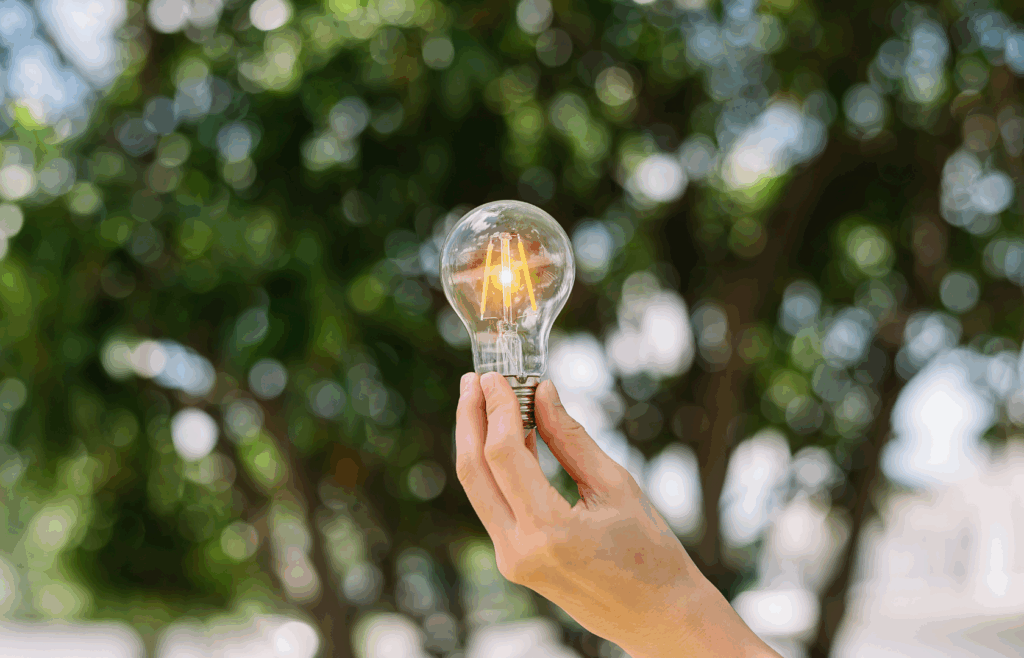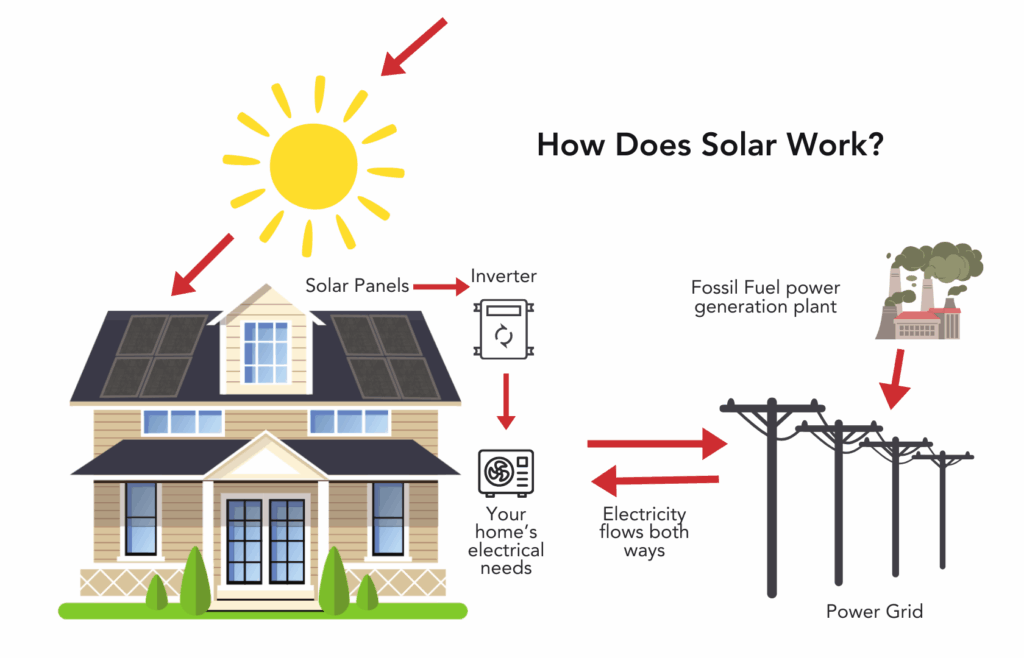
Ever wondered how solar panels power your home? You’re not alone. Understanding solar might sound complicated, but the basics are surprisingly simple. In a nutshell, solar panels capture energy from sunlight and turn it into electricity. That electricity can power everything in your home, from your fridge to your AC, to your fifth grader’s Nintendo Switch. Let’s dig into the details.
First, Some Science!
You may remember learning in science class that the sun transmits light in the form of photons. Or maybe you learned it from the They Might Be Giants song, “Why Does the Sun Shine?” Either way is good, but TMBG is more fun.
Anyway, photons make electricity through something called the Photovoltaic (PV) Effect. This is the scientific process where light interacts with certain materials to create electricity (including silicon, which is what solar panels are made from).
When the photons hit the solar panels, they are absorbed by the silicon atoms in the panels. The energy from the photons causes electrons in the silicon atoms to become excited and move around, creating an electric current.

Next, Some Electrical Info
Once the electrical current has been created, the current flows along copper wires embedded in the glass in the solar panel, and then along the wires that lead from the solar panels to an inverter. The inverter converts the DC (direct current) electricity made by the PV Effect into AC (alternating current) electricity that can be used in your home.
Now, For the Cool Part
If the solar panels produce more electricity than is needed at the time, the excess energy can be stored in a battery for later use or sent back to the electrical grid for use by your neighbors or nearby businesses. If your state has a utility program called net metering, you will even get a credit on your utility bill for any extra power you produce! That’s one of the ways solar can save you money.
Why Should We Care?
Every time the sun powers your home, it means you need less grid energy, which means less pollution from a fossil fuel plant, and one more step toward clean air for our kids.
In most localities, the electricity that we get from our utilities (grid power) is made up of a mix of coal, natural gas, hydropower, nuclear power, and renewable energy like wind and solar. The percentage of each is different depending on many factors, including your state laws, your natural topography, and the demand from homeowners and businesses.
In most states, the percentage from renewables is very low. Every time a homeowner or business goes solar, they’re doing their part toward increasing that percentage and putting the fossil fuel generator down the road out of business.
That’s why Sun Day on, September 21, matters. It’s a chance for moms like us to shine a light on solar energy — literally and figuratively. Join us and host a Sun Day event to show your community that solar is simple, doable, and powerful!
